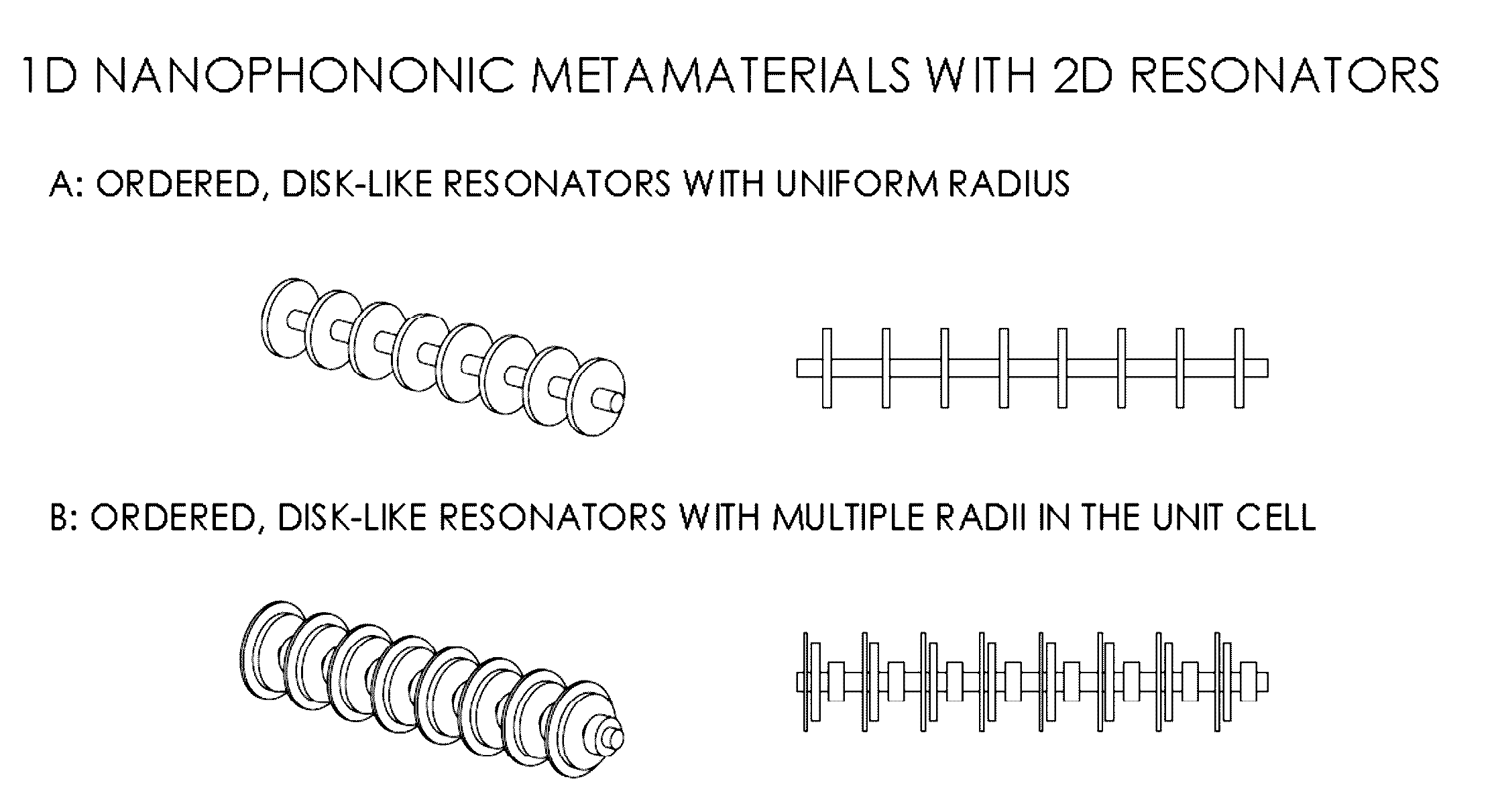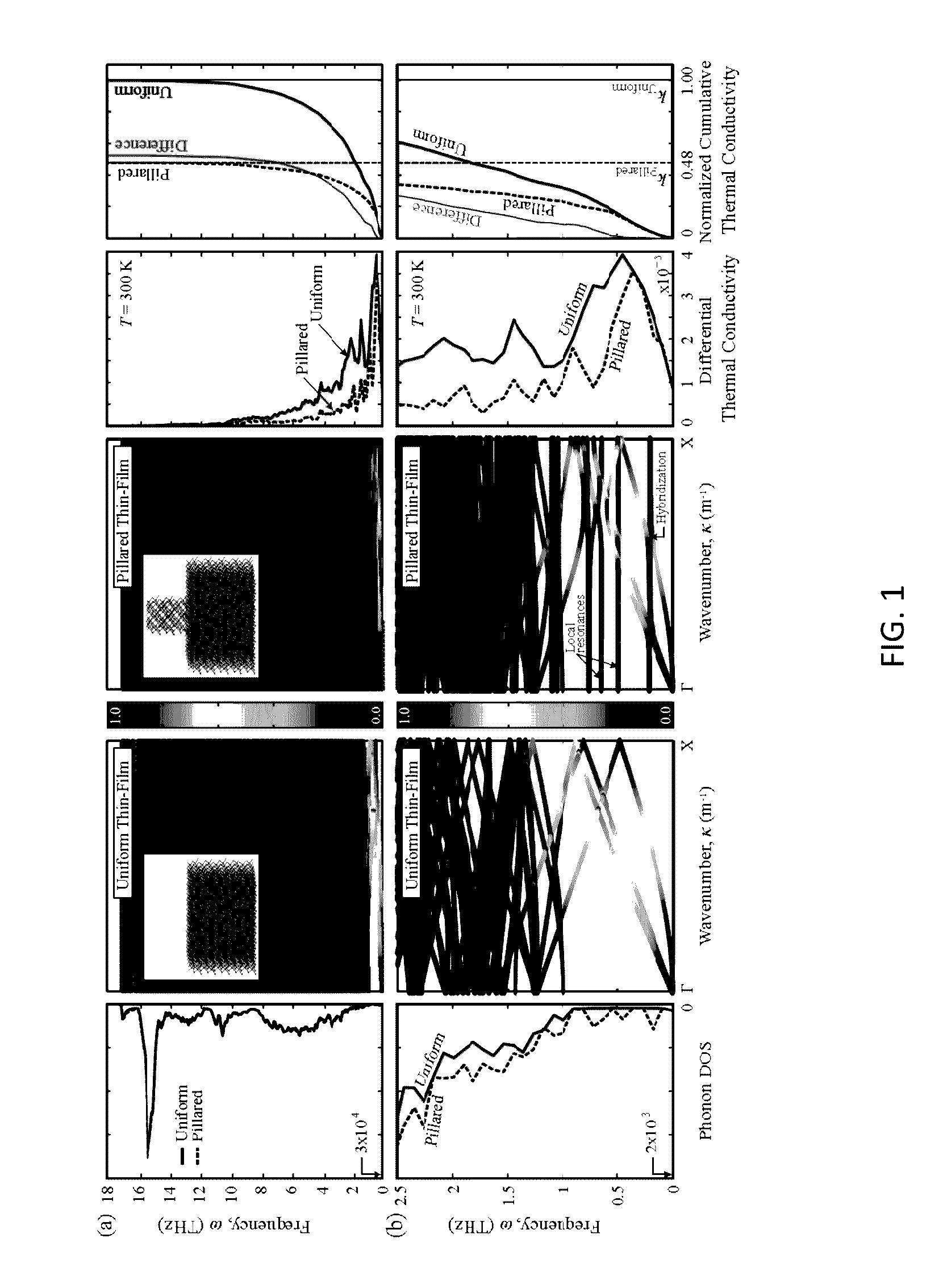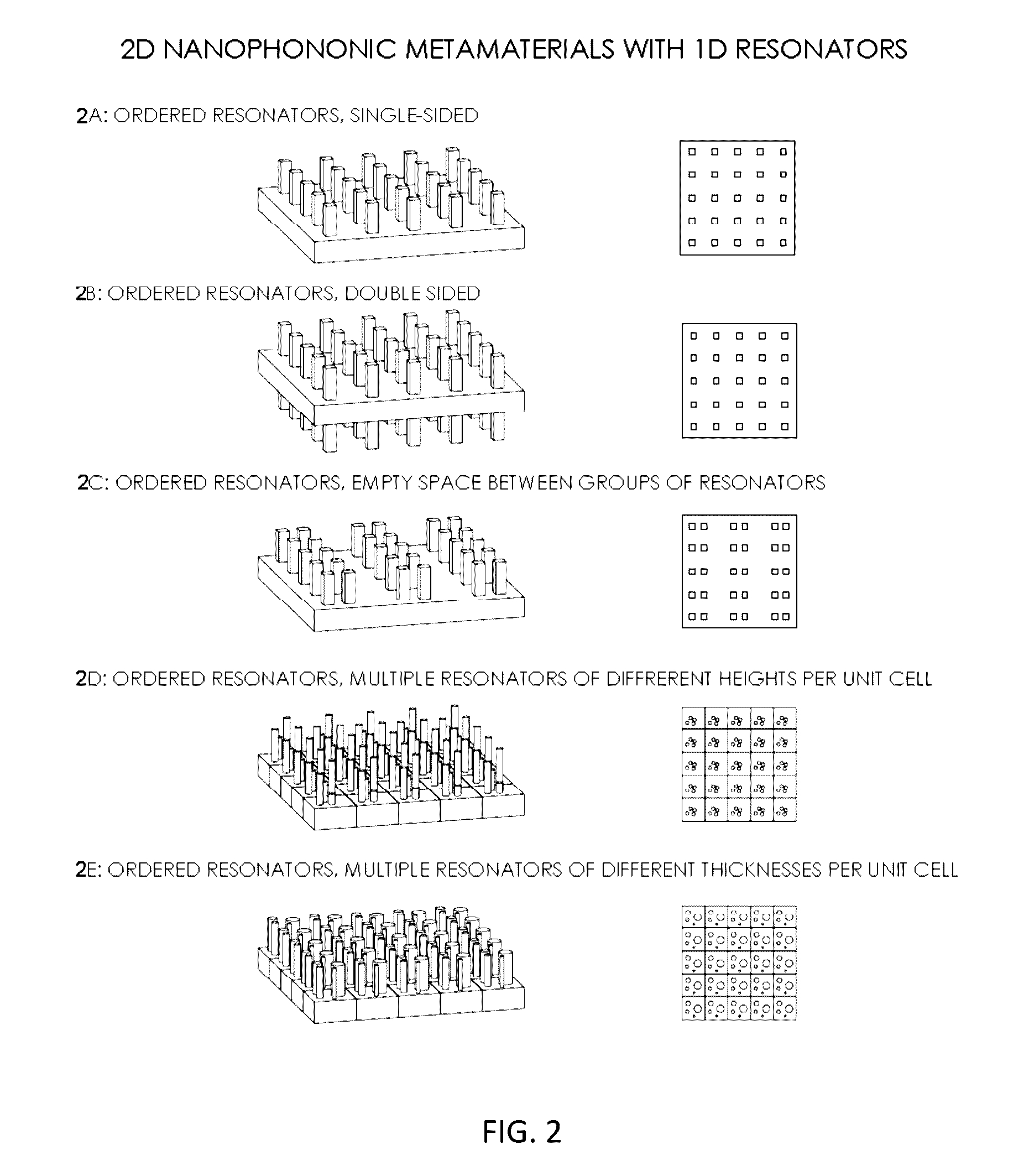Phononic Metamaterials
- Summary
- Abstract
- Description
- Claims
- Application Information
AI Technical Summary
Benefits of technology
Problems solved by technology
Method used
Image
Examples
Embodiment Construction
[0037]Phononic metamaterials are provided herein. For example, phononic metamaterials may be provided at the nanoscale (also described as a nanophononic metamaterial (NPM)), at the microscale (also described as a microphononic metamaterial (Micro PM), at the milli scale (also described as a milliscale metamaterial (Milli PM) as well as at other larger or smaller scales. In some implementations, a phononic metamaterial can be used to significantly reduce thermal conductivity in a structured semiconducting material (e.g., a nano-structured, micro-structured or milli-structured) and, in some implementations, do so without affecting (or at least without significantly affecting) other important factors for thermoelectric energy conversion, such as the electtical conductivity.
[0038]Heat flow is carried by atomic waves (phonons) with a wide range of frequencies. A phononic metamaterial may contain miniature oscillators / resonators (these two terms are used interchangeably herein) that excha...
PUM
 Login to View More
Login to View More Abstract
Description
Claims
Application Information
 Login to View More
Login to View More - R&D
- Intellectual Property
- Life Sciences
- Materials
- Tech Scout
- Unparalleled Data Quality
- Higher Quality Content
- 60% Fewer Hallucinations
Browse by: Latest US Patents, China's latest patents, Technical Efficacy Thesaurus, Application Domain, Technology Topic, Popular Technical Reports.
© 2025 PatSnap. All rights reserved.Legal|Privacy policy|Modern Slavery Act Transparency Statement|Sitemap|About US| Contact US: help@patsnap.com



